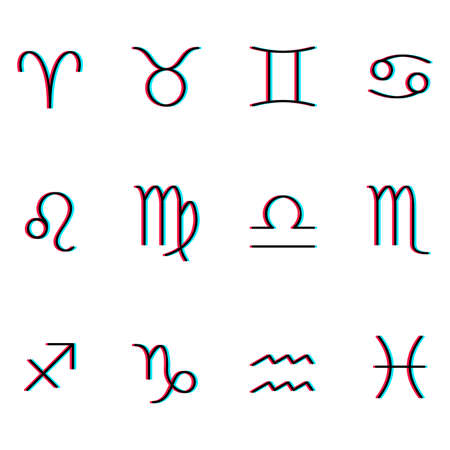Introduction to Antardasha in Vedic Astrology
In the rich tradition of Indian astrology, known as Jyotish Shastra, the concept of Dasha and Antardasha holds immense importance for understanding the timing of events in an individual’s life. The Dasha system, especially the Vimshottari Dasha, is a cornerstone in Vedic astrology, guiding astrologers to interpret the unfolding of karma through planetary periods. Within this broader framework, Antardasha refers to the sub-periods that operate within the main Dasha period, adding nuanced layers to astrological predictions. For those belonging to Kumbh (Aquarius) and Meen (Pisces) Rashi, analyzing the Antardasha becomes particularly significant, as it reveals the subtle influences of different planets on one’s destiny. In Indian culture, families often consult astrologers to determine auspicious timings for important events like marriage, career changes, or starting new ventures based on these planetary periods. Thus, understanding Antardasha is not just a matter of curiosity but a practical tool deeply woven into daily life and decision-making for millions across Bharat. This introduction sets the stage for a detailed exploration of how Antardasha impacts natives of Kumbh and Meen Rashi, and why mastering its analysis is essential for effective remedies and positive outcomes in Vedic astrology.
2. Kumbh & Meen Rashi at a Glance
Within the framework of Vedic astrology, Kumbh (Aquarius) and Meen (Pisces) Rashis occupy a unique place, shaping the lives and destinies of many Indian natives. Each Rashi is not only defined by its planetary lord and elemental nature but is also deeply woven into Indias cultural, spiritual, and practical realities. Let us explore these Rashis from multiple perspectives that resonate with Indian experiences.
Cultural Significance of Kumbh & Meen Rashi
In Indian tradition, the symbolism and attributes of each Rashi influence social customs, rituals, and even naming ceremonies. Kumbh Rashi is associated with innovation, social welfare, and humanitarian values—traits highly regarded in communities striving for collective growth. On the other hand, Meen Rashi embodies compassion, spirituality, and artistic tendencies, making it revered among families who value emotional depth and religious devotion.
| Aspect | Kumbh (Aquarius) | Meen (Pisces) |
|---|---|---|
| Planetary Lord | Shani (Saturn) | Guru (Jupiter) |
| Element | Air | Water |
| Cultural Traits | Progressive thinking, group orientation | Empathy, spiritual inclination |
| Common Names | Sankranti rituals, Kumbh Mela association | Piscean pooja practices, temple visits |
Spiritual Perspective: The Inner Journey
Kumbh Rashi natives are often seen as seekers of truth through unconventional paths. Their journey is marked by detachment and intellectual exploration—a quality reflected in the sadhanas practiced during Shani-related fasts or meditations. Meen Rashi individuals, on the contrary, pursue moksha (liberation) through bhakti (devotion) and service to others. Their connection with Guru or Jupiter brings an innate desire to transcend material concerns for higher wisdom.
Practical Approach in Day-to-Day Life
From a practical angle, the traits of both Rashis manifest distinctly in daily living:
| Area | Kumbh Rashi Approach | Meen Rashi Approach |
|---|---|---|
| Career Choices | Social work, technology, research roles | Counselling, arts, spiritual vocations |
| Family Roles | Mediators in disputes; promoters of unity | Caretakers; providing emotional support |
Navigating Antardasha: A Cultural Insight
The Antardasha periods within Mahadashas bring out specific strengths and vulnerabilities related to each Rashi. For instance, when Shani Antardasha operates for a Kumbh native, discipline and perseverance become central themes in family life or career progression. During Guru Antardasha for Meen natives, opportunities for spiritual growth and charity work increase—often celebrated through local satsangs or temple offerings.
Thus, understanding these core characteristics from all angles helps Indian natives harness their Rashis power more consciously in daily life.

3. Methods of Analysing Antardasha for Kumbh & Meen
Step-by-Step Indian Astrological Approach
To accurately analyse Antardasha for Kumbh (Aquarius) and Meen (Pisces) Rashi, Vedic astrologers in India follow a systematic, stepwise method rooted in classical jyotish texts. The process combines planetary positions, Dasha-bhukti calculations, and nakshatra (constellation) influences to provide precise results tailored to the native’s janma kundli.
Step 1: Identify the Mahadasha and Current Antardasha Lord
The analysis begins by determining the ongoing Mahadasha (major period) and the specific Antardasha (sub-period) lord from the natives Vimshottari Dasha sequence, based on their exact time, date, and place of birth as per Indian Standard Time. For example, a person with Kumbh Rashi under Shani Mahadasha and Budh Antardasha will experience different effects than one with Meen Rashi under Guru Mahadasha and Chandra Antardasha.
Step 2: Locate Placement in Rashi Chart
Next, the positions of both Mahadasha and Antardasha lords are examined within the rashi chart (lagna kundli). Their house placement, sign strength, aspects (drishti), conjunctions with other grahas, and yogas formed are carefully noted. For Kumbh natives, special focus is given if Shani or Rahu are involved; for Meen natives, Guru or Chandra influences are closely observed.
Step 3: Examine Nakshatra Influence
The ruling nakshatra of each dasha lord is evaluated according to the Moons position at birth. Indian astrologers give immense importance to nakshatra pada (quarter) as it modifies the nature of results during any Antardasha. For example, if the Antardasha lord occupies its own nakshatra or a friendly nakshatra, auspicious results are more likely; otherwise, challenges may arise.
Step 4: Assess House Significance & Karakatwa
Each planet signifies certain houses (bhavas) and karakatwas (significations). The analysis includes checking which houses are activated by the dasha-antardasha lords for Kumbh and Meen rashi natives—such as career (10th bhava), marriage (7th bhava), or finance (2nd/11th bhava)—and what events or changes may manifest accordingly.
Step 5: Observe Gochar (Transit) Effects
Current planetary transits or gochar are correlated with dasha periods. Indian astrologers especially note Saturn’s and Jupiter’s transit over natal Moon for these rashis—known as Sade Sati or Guru Gochar—as these can amplify or mitigate ongoing dasha-antardasha effects.
Standard Nakshatra Practices for Calculation
Nakshatra-based Dasha calculation is a cornerstone of Indian astrology. For both Kumbh and Meen rashi individuals, practitioners use traditional panchanga or modern software to calculate precise dasha timings using Janma Nakshatra. The table of Vimshottari Dasha years assigned to each planet is consulted, followed by sequential sub-division into antardashas (bhuktis), pratyantar dashas, etc., ensuring accuracy in prediction. This stepwise methodology ensures that every Indian horoscope receives personalised analysis rooted in centuries-old tradition.
4. In-depth Effects: Antardasha Combinations for Each Rashi
Understanding the nuanced effects of Antardasha within Mahadasha is crucial for Kumbh (Aquarius) and Meen (Pisces) natives. These sub-periods, based on the planetary lords, can trigger significant changes in life, influencing career, relationships, finances, and health. Below, we explore typical Antardasha combinations for each Rashi, highlighting common outcomes with relatable Indian examples.
Kumbh Rashi: Antardasha Impacts
| Mahadasha/Antardasha | Typical Events & Changes | Indian Context Example |
|---|---|---|
| Saturn/Saturn | Stability in career and responsibility increase; slow progress but strong foundation. | A government employee from Bhopal receives a promotion after years of steady service. |
| Saturn/Jupiter | Opportunities for higher education or spiritual growth; family expansion likely. | A young woman in Delhi prepares for UPSC exams and considers arranged marriage proposals. |
| Saturn/Mercury | Intellectual pursuits flourish; communication skills rewarded at work or business. | An IT professional in Bengaluru launches a successful tech blog in English and Hindi. |
| Saturn/Venus | Focus on partnerships, marriage, or creative projects; luxury expenses rise. | A married couple in Mumbai invests in a new flat and renovates their home. |
Meen Rashi: Antardasha Impacts
| Mahadasha/Antardasha | Typical Events & Changes | Indian Context Example |
|---|---|---|
| Jupiter/Jupiter | Wealth accumulation, family harmony, and religious activities peak. | A teacher from Lucknow conducts a family yagna and acquires ancestral property. |
| Jupiter/Saturn | Duties towards elders or society; challenges bring maturity and wisdom. | A Chennai-based social worker starts an NGO for senior citizens’ welfare. |
| Jupiter/Mars | Energy surges; new ventures or relocation likely; prone to impulsiveness. | A student in Pune shifts to Hyderabad for a new job opportunity in a start-up company. |
| Jupiter/Moon | Mental peace sought; focus on home, mother’s health, emotional bonding increases. | An NRI returns to Kolkata to care for his aging mother during this period. |
Key Takeaways for Kumbh & Meen Natives:
- Kumbh: Saturn’s influence brings gradual yet lasting results. Natives often experience pivotal shifts in profession or social status during favorable Antardashas. Patience and discipline are essential traits to nurture during these times.
- Meen: Jupiter’s benevolence manifests through growth in knowledge, wealth, and spiritual pursuits. Emotional highs and lows are common, especially when Moon or Mars rules the sub-periods. Practicing gratitude and staying grounded help navigate these phases smoothly.
Cultural Note:
The effects of Antardasha manifest through everyday life events—be it educational milestones like clearing JEE/NEET, participating in traditional rituals such as Satyanarayan Puja, or major life transitions like changing jobs or moving cities. Recognising these patterns in an Indian context empowers individuals to make mindful decisions aligned with their Dharma during each unique phase of their journey.
5. Remedies & Pariharas from Traditional Vedic Wisdom
Understanding the Role of Remedies for Kumbh & Meen Rashi
When Antardasha periods bring challenges for those with Kumbh (Aquarius) and Meen (Pisces) Rashi, Vedic astrology prescribes time-tested remedies, or pariharas, to pacify planetary influences and restore balance. These remedial measures are deeply rooted in Indian spiritual practices and are tailored to the unique energies of each Rashi, considering their ruling planets and current Dasha lords.
Popular Indian Remedies & Rituals
For Kumbh Rashi natives, Saturn’s influence can be intense during certain Antardashas. Common remedies include lighting a til (sesame oil) lamp on Saturdays, offering black sesame seeds at temples, and reciting the Shani Stotra. For Meen Rashi individuals governed by Jupiter, performing Guru Puja on Thursdays, donating yellow clothes or chana dal to Brahmins, and chanting the Guru Beej Mantra are highly recommended. These rituals are believed to reduce malefic effects and invite auspiciousness.
Mantras for Specific Planets
- Kumbh Rashi: Recite “Om Sham Shanicharaya Namah” 108 times on Saturdays to appease Saturn.
- Meen Rashi: Chant “Om Gram Greem Graum Sah Gurave Namah” on Thursdays to strengthen Jupiter’s blessings.
Pujas & Practical Upayas
- Navagraha Puja: Performing a Navagraha Puja at a reputed temple helps harmonize all planetary energies during turbulent Antardasha periods.
- Tarpan and Abhishek: Offering water (jal abhishek) to Lord Shiva or performing tarpan for ancestors can alleviate karmic obstacles indicated in your chart.
Charity and Seva (Service)
Charity is an integral part of Indian upayas. Donating food grains, oil, blankets, or medicines to the needy—especially on days aligned with your Dasha lord—can bring relief. For Kumbh Rashi, Saturday donations at Shani temples are ideal. Meen Rashi natives benefit from giving yellow items or sweets to children or priests on Thursdays.
The Importance of Consistency & Faith
The effectiveness of these remedies lies in regular practice, unwavering faith, and pure intentions. Combining rituals with positive actions like meditation, acts of kindness, and self-discipline strengthens one’s resilience against planetary adversities as per Vedic tradition. By embracing these time-honoured pariharas, Kumbh and Meen Rashis can navigate difficult Antardasha phases with hope and spiritual support.
6. Case Studies: Real-Life Experiences & Success Stories
Understanding Antardasha Through Everyday Lives
To truly grasp the influence of Antardasha for Kumbh (Aquarius) and Meen (Pisces) Rashi natives, let us delve into real-life stories from the Indian context. These case studies not only highlight the effects of planetary sub-periods but also showcase how traditional Vedic remedies and timely decisions can lead to transformative outcomes.
Case Study 1: Navigating Career Challenges – Suresh’s Journey
Suresh, a software engineer from Bengaluru with Kumbh Rashi, entered the Shani-Rahu Antardasha. He experienced sudden workplace politics and job instability. Guided by his family astrologer, he started regular recitation of Hanuman Chalisa on Tuesdays and wore a blue sapphire as advised. Within months, he secured a new position with better prospects. This story illustrates how combining astrological insight with faith in remedies can help one tide over professional turbulence.
Case Study 2: Relationship Harmony – Priya’s Experience
Priya, a homemaker from Pune with Meen Rashi, faced misunderstandings in her marriage during Guru-Mangal Antardasha. Her elders recommended fasting on Thursdays and donating yellow clothes to Brahmins. The couple also performed a simple Satyanarayan Puja at home. Gradually, harmony was restored, reaffirming the importance of community-based rituals and charity in healing relationships under challenging dasha periods.
Case Study 3: Educational Breakthrough – Akash’s Story
Akash, a student from Varanasi with Kumbh Rashi, struggled academically during Budh-Surya Antardasha. His parents sought guidance from a pandit who suggested offering water to Surya Dev every morning and keeping a green handkerchief. These small yet culturally rooted remedies helped Akash regain focus and improve his results—showcasing how time-tested traditions continue to support students facing planetary afflictions.
Lessons Learned from Native Experiences
These cases underline that while Antardasha brings its own set of challenges and opportunities for Kumbh and Meen Rashi individuals, practical application of remedial measures—be it through mantra chanting, charity, or temple rituals—can significantly alter outcomes. Such anecdotes reinforce the deep connection between India’s spiritual heritage and daily life management through Vedic astrology.

